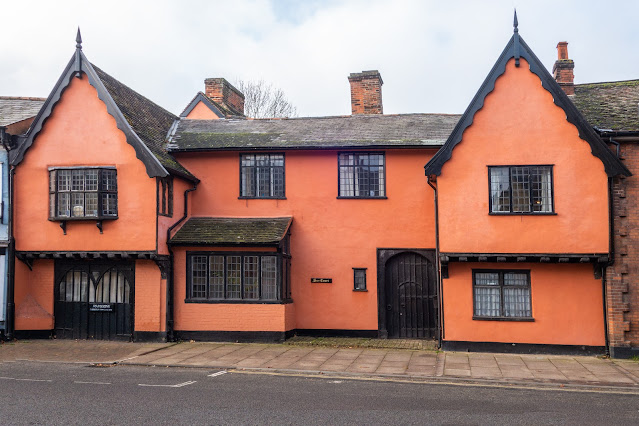Unusual reredos in Great Waldingfield Church
Another church I have not seen before was Great Waldingfield`s St Lawrence. Having been warned that it is kept locked, I was pleased to find on arrival that it was in the process of being made ready for a funeral. The people involved were very welcoming and so was able to get a photograph of the main point of interest.
Like many churches in this part of the world, the Victorians really `went to town` on the restoration.It was a gentleman by the name of John Hakewill, whose major restoration of the nave was made in the 1870s. He was the brother of the more famous Edward Hakewill, but he had often designed the furnishings for his brother's restorations. His work here was enthusiastic and overwhelming, replacing not only the furnishings but also the roofs and the window tracery.
The Victorians certainly `had a thing` about their churches!
The great architect William Butterfield turned up here to rebuild the chancel. Butterfield was a great enthusiast for encaustic tiles, using them on the walls as well as the floor. When I first read the above, I wondered what the word `encaustic` meant and found the following explanation: Encaustic means "burnt in" and refers to the way the tiles are made, which is rather unique. Instead of being glazed with colour, the material itself is pigmented and patterns are made by in-laying multiple colours before the tiles are pressed.
The real gem of this church is to be found in the remarkable sanctuary walls, forming a great three-sided reredos set with mosaics. See image below:
The marbles in these mosaics were collected in the ruins of heathen temples in old Rome AD 1867-1869. 'Old Rome' means the Roman Empire, and Emily and Louisa Baily, two sisters of the rector, travelled extensively in the Middle East and north Africa in the middle years of the 19th Century. They collected their stones in the Holy Land and in Egypt, and were the first European women known to have travelled alone beyond the second cataract of the River Nile into modern Sudan. The stones they brought back in trunks and carpet bags were sliced thinly thanks to a new industrial process of the time, and used to create varying designs across the three walls. The central cross is made up of stones collected in the tomb of Rameses II. There's some concern now that the reredos is deteriorating. The metal brackets are corroding and some stones are falling off, and so a major restoration project is currently in hand.
A rather unusual sanctuary but well worth seeing.






Comments